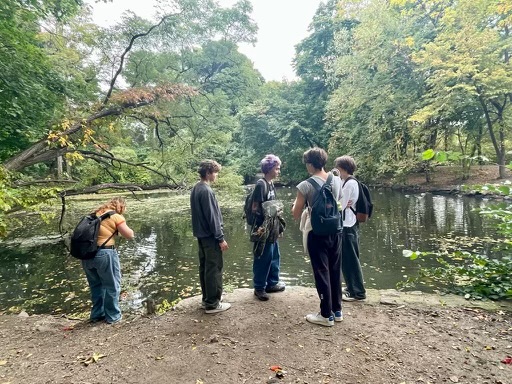Not even a month into the spring semester, the campus is abuzz with groups discussing next year’s City Semester. Interest is at a seemingly all-time high, in no small part due to the doubled capacity of the program. After a successful fall semester, the program will seemingly run for both semesters with separate groups.
However, there is much confusion about what City Semester is. Simply put, it’s a unique study experience within Fieldston, where you spend the entire semester learning about New York City with a small group of your peers and practice service learning while doing so. Members from every academic department teach the program, but the only teacher whose full-time job is City Semester is Roy Blumenfeld, who directs the program.
A typical on-campus day might include parts of regularly banded classes with only City Semester peers – science with Mr. Waldman, math with Mr. Chu, history with Dr. Banks – or one class with all three. You may be studying math during a given period, and suddenly, Dr. Banks walks in to provide meaningful context. Or you’ll be studying Manahatta by Mary Kathryn Nagle, a play about past and present indigenous relationships with Manhattan, and Mr. Blumenfeld comes in to examine the ethics of the play. It is truly a boundless experience. Because of this interdisciplinary system, your periods are not necessarily separated by classes but by assignment – and some don’t fall into the system.

City Semester does not majorly impact school functions – participants can easily be members of sports teams or school plays. However, primary obstacles are reached in the department of year-long programs – sometimes, only joining a year-long class for half a year can prove challenging for the City Semester system.
One of City Sem’s core tenets is the amount of time spent off campus. Students may spend two days off campus on field trips in a given week. Half of the day on Wednesday is typically spent volunteering in Brook Park, a small community garden in the South Bronx. Another day in the week usually is spent learning about the ins and outs of New York’s history, culture, literature, or workings.
There is a lot of speculation that City Semester is “a cult.” To those who say that, I would argue that spending so much time together with the same group of people is challenging without at least becoming close. Between voyages in and out of school hours, sleeping on campus for an early morning trip, or simply classes, the amount of time spent with the same group of peers is much greater than in traditional school.
Now that City Semester is a yearlong program, there will always be a group of students roaming throughout the city learning about what it means to be a New Yorker. But where is the limit for programs like City Semester? The program is a success that students are interested in, but much of its charm is likely due to its personalization. With a larger group, the close-knit vibe that City Semester exudes may be lost. Perhaps there is a future in which students of all grades can access experiential learning. But at least for current hands-on learning, dare to try and become one of the 30-40 lucky juniors who partake in this program.







